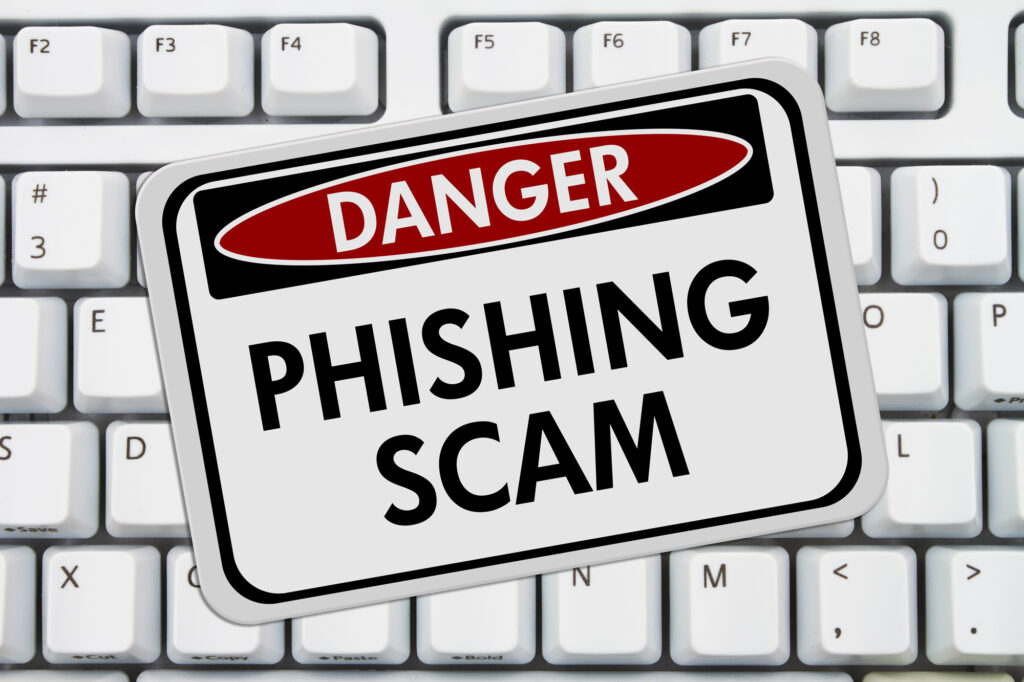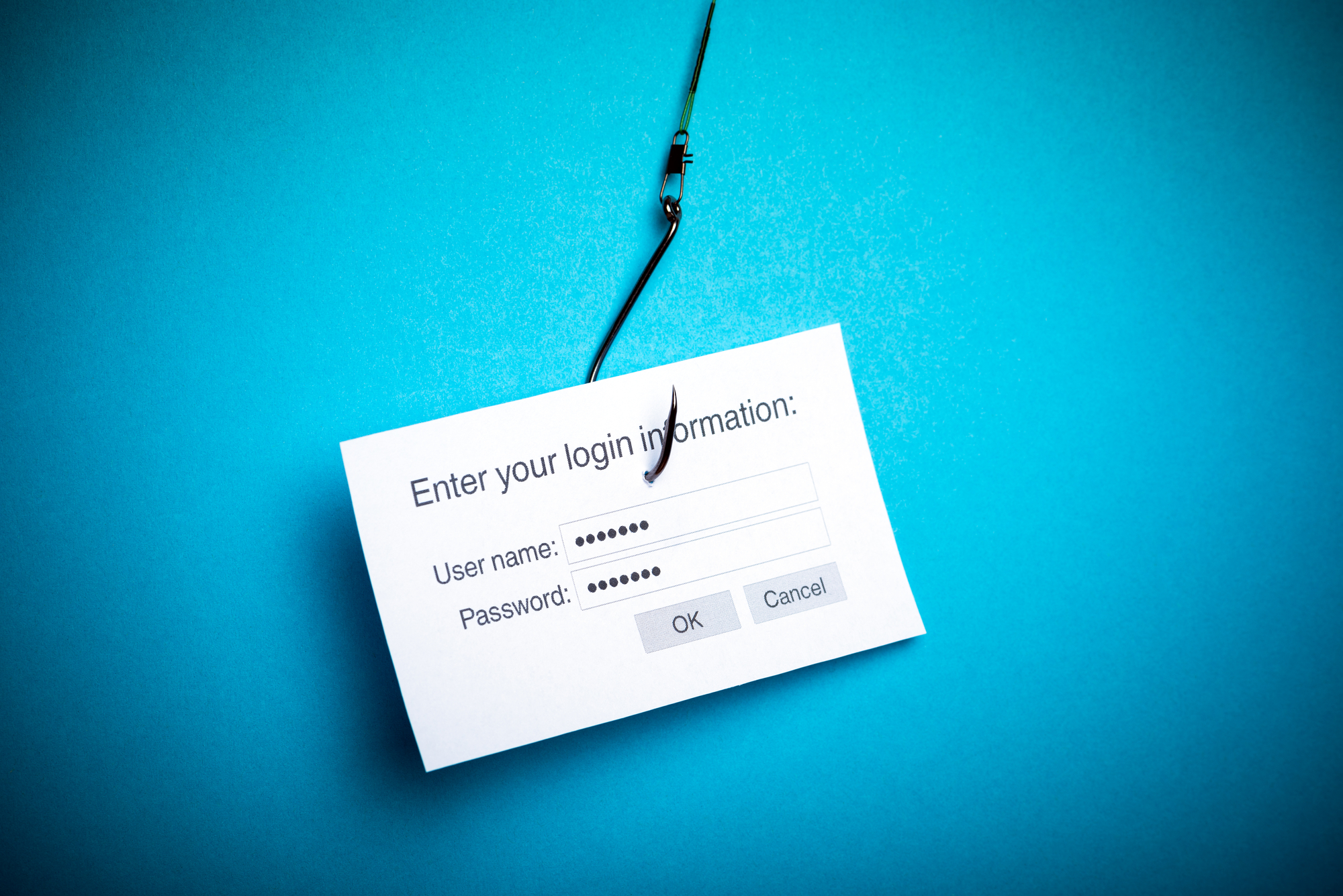In the vast ocean of the internet, a silent predator lurks, ever ready to strike unsuspecting victims. This predator is known as a phishing attack. Phishing attacks are crafty, deceptive, and increasingly sophisticated cyber attacks, making them a significant threat to businesses, especially those needing better cybersecurity. This article dives deep into phishing attacks, exploring various types, from deceptive phishing, spear phishing, and CEO fraud, to smishing, vishing, and snowshoeing. Each section provides a clear, non-technical explanation of the attack type, akin to a guidebook for navigating treacherous waters. Real-world examples, like the PayPal phishing scam and the FACC CEO fraud case, are included to illustrate the devastating impact of these attacks. By understanding these threats, businesses can better protect themselves and avoid the silent predator lurking in the depths.
1. Deceptive Phishing Attack
Deceptive Phishing is the most common type of phishing campaign, where the attacker impersonates a legitimate company to steal your personal information or login credentials. Think of it as a con artist pretending to be a bank teller to get your account details. The scammer may use a sense of urgency in their phishing message to make the victim act and reveal personal details. A recent example is the PayPal phishing scam, where users received emails claiming to be from PayPal.
2. Spear Phishing
This is a more targeted form of email phishing. The attacker personalizes their phishing email with the target’s name, position, company, work phone number, and other information to make the email seem less suspicious. It’s like a con artist who has done their homework about their target. A notable example is the 2011 RSA breach.
3. CEO Fraud/Business Email Compromise (BEC)
In this type of attack, the cybercriminal impersonates the CEO or any executive and sends a malicious email to an employee in finance or HR to manipulate them into transferring money or sensitive data. It’s like a con artist impersonating the boss. The FACC CEO fraud case is a prime example.
4. Smishing and Vishing
These phishing attacks are conducted over SMS messages (Smishing) and Voice Phishing (Vishing). It’s like receiving a fraudulent text message or a scam call.
5. Snowshoeing
Spammers spread their spam load across many IPs in this attack to avoid detection. It’s like a thief spreading out stolen goods in different locations.
6. Whaling
Whaling attacks are phishing attacks that specifically target senior executives within an organization. The goal is to trick the executive into revealing personal or corporate data. These attacks are often more sophisticated and may involve extensive research on the target to increase the scam’s credibility.
7. Clone Phishing
In this type of phishing attack, a legitimate email with an attachment or link has its content and recipient address(es) taken and used to create an almost identical or cloned email. The attachment or link within the email is replaced with a malicious version and then sent from an email address spoofed to appear to come from the original sender.
8. Watering Hole Phishing
This type of attack involves compromising a specific website by inserting an exploit resulting in a malware infection. The victims are usually groups (hence the term ‘watering hole’), like company departments, families, or whole companies.
9. Man-in-the-Middle Phishing
In this type of attack, the phisher secretly intercepts and possibly alters the communication between two parties who believe they are directly communicating with each other.
10. Angler Phishing
Angler phishing is a relatively new type of phishing attack that specifically targets social media users. In this scenario, the attacker creates a fake social media account and pretends to be a customer service representative working for a company. They then reach out to customers who have made complaints or inquiries on social media, offering to help resolve their issues. The goal is to trick the customer into revealing sensitive information, such as login credentials or credit card numbers. It’s like a con artist pretending to be a helpful customer service agent, only to steal your information when you least expect it. You can learn more about angler phishing from this source.
How To Protect Yourself From Phishing Attacks

These attacks are cleverly disguised to look like they’re from a legitimate source but be aware. With the right knowledge and tools, you can protect and keep your information safe. Let’s dive in and explore how you can guard against these cyber threats.
- Stay Informed About Phishing Techniques: New phishing scams are constantly being developed. Stay on top of these new phishing techniques to avoid falling prey to one. Keep your eyes peeled for news about new phishing scams. By finding out about them as early as possible, you will be at a much lower risk of getting snared by one. Many newsletters are available for individuals that focus on phishing scams (source).
Think Before You Click!: It’s fine to click on links when you’re on trusted sites. However, clicking a link that appear in random emails and instant messages isn’t such a smart move. Hover over links that you need clarification on before clicking on them. Do they lead where they are supposed to lead? A phishing email may claim to be from a legitimate company, and when you click the link to the website, it may look exactly like the real website. The email may ask you to fill in the information but the email may not contain your name. Most phishing emails will start with “Dear Customer” so you should be alert when you come across these emails (source).
Install an Anti-Phishing Toolbar: Most popular Internet browsers can be customized with anti-phishing toolbars. Such toolbars run quick checks on the sites that you are visiting and compare them to lists of known phishing sites. The toolbar will alert you if you stumble upon a malicious site. This is just one more layer of protection against phishing scams, and it is completely free (source).
Verify a Site’s Security: It’s natural to be a little wary about supplying sensitive financial information online. However, as long as you are on a secure website, you shouldn’t run into any trouble. Before submitting any information, make sure the site’s URL begins with “https” and there should be a closed lock icon near the address bar. Check for the site’s security certificate as well. If you get a message stating a certain website may contain malicious files, do not open the website. Never download files from suspicious emails or websites (source).
Check Your Online Accounts Regularly: If you don’t visit an online account for a while, someone could be having a field day with it. Even if you don’t technically need to, check in with each of your online accounts on a regular basis. Get into the habit of changing your passwords regularly too. To prevent bank phishing and credit card phishing scams, you should personally check your statements regularly. You can get monthly statements for your financial accounts and check each entry carefully to make sure no fraudulent transactions have been made without your knowledge (source).
Keep Your Browser Up to Date: Security patches are constantly released for popular browsers. They are released in response to the security loopholes that phishers and other hackers inevitably discover and exploit. If you typically ignore messages about updating your browsers, stop. The minute an update is available, download and install it (source).
Use Firewalls: High-quality firewalls act as buffers between you, your computer, and outside intruders. You should use two different kinds: a desktop firewall and a network firewall. The first option is a type of software, and the second option is a type of hardware. They drastically reduce the odds of hackers and phishers infiltrating your computer or your network (source).
Be Wary of Pop-Ups: Pop-up windows often masquerade as legitimate website components. All too often, though, they are phishing attempts. Most browsers allow you to block pop-ups; you should do so. If one manages to slip through the cracks, don’t click the “cancel” button; such buttons often lead to phishing sites. Instead, click the small “x” in the upper corner of the window (source).
Never Give Out Personal Information: Generally, you should never share personal or financially sensitive information over the Internet. This rule spans all the way back to the days of America Online, when users had to be warned constantly due to the success of early phishing scams. When in doubt, go visit the main website of the company in question, get their number and give them a call. Most of the phishing emails will direct you to pages where entries for financial or personal information are required. An Internet user should never make confidential entries through the links provided in the emails. Never send an email with sensitive information to anyone. Make it a habit to check the address of the website. A secure website always starts with “https” (source).
Use Antivirus Software: There are plenty of reasons to use antivirus software. Special signatures that are included with antivirus software guard against known technology workarounds and loopholes. Just be sure to keep your software up to date. New definitions are added all the time because new scams are also being dreamed up all the time. Anti-spyware and firewall settings should be used to prevent phishing attacks and users should update the programs regularly. Firewall protection prevents access to malicious files by blocking the attacks. Antivirus software scans every file which comes through the Internet to your computer. It helps to prevent damage to your system (source).
Conclusion
Phishing attacks have emerged as a prevalent concern for businesses. These deceptive schemes are not just a nuisance; they can have severe consequences, leading to financial losses and damage to a company’s reputation.
In this comprehensive guide, we’ve explored various phishing attacks, from widespread email phishing to more targeted spear phishing, clone phishing, and whaling. We’ve also delved into the lesser-known but equally dangerous smishing, vishing, and angler phishing.
But knowledge is only the first step. We’ve also provided a short guide on protecting your business from these cyber threats. By staying informed, thinking before clicking, and implementing security measures, you can significantly reduce the risk of falling victim to these attacks.
Remember, in the realm of cybersecurity, complacency can be costly. It’s crucial to stay vigilant, keep abreast of the latest threats, and take proactive steps to safeguard your business. After all, in the fight against phishing attacks, you are your first line of defense.
Shield your business from cyber threats. Stay informed. Stay secure.



